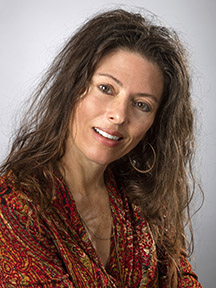
By Jim Benes
Rochelle Dalla has worked in the field of human trafficking for over 20 years. In 2020, she was the co-editor for “Routledge International Handbook on Human Trafficking: A Multi-Disciplinary and Applied Approach.” And currently, she is the editor of the Journal of Human Trafficking. So, she is well suited to understand where the unanswered questions are on the international topic. One of them happens to be the dynamics surrounding the migrant populations associated with human trafficking. In particular, the family dynamics of these populations in India are of interest to Dalla, professor in the Department of Child, Youth, and Family Studies in the College of Education and Human Sciences.
She and Sharvari Karandikar, associate professor at Ohio State University, received Institutional Review Board approval to conduct the research in March of 2020 – weeks before the globe entered a pandemic. With what seemed like dire outcomes for their research plans, they sought out the silver linings that began to take shape. Dalla and Karandikar noticed that they had an opportunity to see how this small population of migrating sex workers and their children were impacted by the COVID19 pandemic.
The small area in Mumbai that Dalla and Karandikar are focusing on is called Hanuman Tekdi, just north of Mumbai. They found that this population of women are largely trafficked and come from surrounding regions and countries. They also found that their access to information regarding COVID19 was riddled with disinformation and faulty medical practice. A lot of information was getting to the women, but often that information focused incorrectly on false remedies and superstition around the virus and how it is spread.
Much research has been conducted on populations of trafficked women, but few have resulted in interviews with the children of trafficked sex workers. This novel component of their research provides new insights to the needs of this community. Had the carefully planned study design not been interrupted, Dalla says, “...we would not have been able to find access to this critical dataset, the interviews with the children of the migrant sex workers.” A good lesson in looking for alternate approaches to research when it might otherwise seem like the opportunity is gone.
More details at: http://cehs.unl.edu/news/cehs/